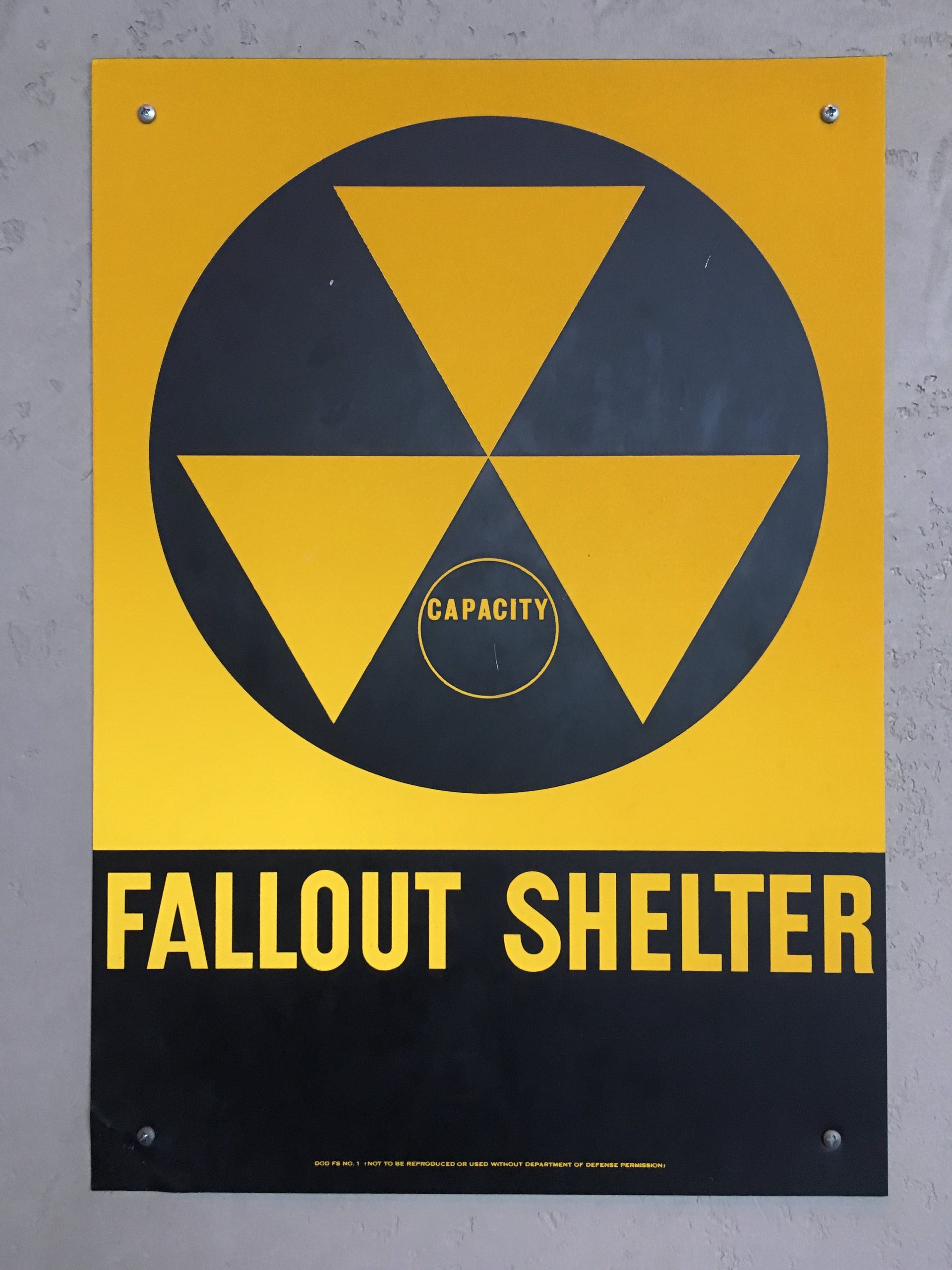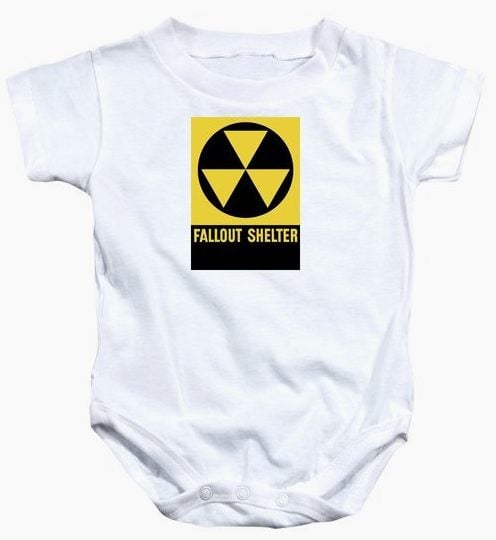As Trump taunts North Korea, Americans are taking the nuclear shelter symbol very literally again
In the 1960’s, an eerie black and yellow symbol blanketed the American landscape. The fallout shelter sign—a graphic comprised of three yellow triangles on a black circle—appeared in front of schools, courthouses, and buildings that were prepared to accommodate people in the event that a nuclear war with the Soviet Union actually happened.


In the 1960’s, an eerie black and yellow symbol blanketed the American landscape. The fallout shelter sign—a graphic comprised of three yellow triangles on a black circle—appeared in front of schools, courthouses, and buildings that were prepared to accommodate people in the event that a nuclear war with the Soviet Union actually happened.
The sign’s designer, Robert Blakeley who passed away last October created the simple insignia for the Army Corps of Engineers. The Office of Civilian Defense (OCD) commissioned a different design from the radiation warning symbol—three triangles with a circle in the middle—because they wanted a symbol of safety in the event of a nuclear catastrophe.

According to a 1963 department of defense newsletter, the six points formed by the yellow triangles signified areas that an ideal fallout should have:
- Shielding from radiation
- Food and water
- Trained leadership
- Medical supplies and aid
- Communications with the outside world
- Radiological monitoring to determine safe areas and time

A fascinating article about the National Fallout Shelter Program on the Civil Defense Museum’s website points out how Steuart L. Pittman, the assistant secretary of defense for civil defense that time, wanted to position the shelter sign as a positive symbol. “In it there is hope rather than despair,” Pittman said in a 1963 statement.
The US government spent $699,800 to produce 1.4 million adhesive-backed metal signs. At that time, the signs were official government markings. On the bottom of each are are the words: “Not To Be Reproduced Or Used Without Department Of Defense Permission.”
More than five decades later, many of these aluminum and steel signs can still be spotted on the sides of buildings, as a benign relic from a bygone era. As it happens, the fall out shelter symbol—once the avatar of a generation’s anxiety—became a pop culture motif. It appears in ironic Cold War era merchandise—t-shirts, coffee mugs, window drapes, boxer shorts, even baby onesies.

As Reuters reports, no one had thought about taking the trouble to pull down the defunct signs until this year. Amid US president Donald Trump’s relentless taunting about a nuclear showdown with North Korea, disaster management experts fear that people might be take the symbol literally today.
Jeff Schlegelmilch, deputy director of Columbia University’s National Center for Disaster Preparedness says that removing the signs is a matter of public safety. “At best, they are ignored, at worst, they’re misleading and are going to cost people’s lives,” he explained to Reuters.
New York City has committed to pull down the fading signs from buildings, though it hasn’t disclosed a plan when and how they’ll do it. Quartz contacted New York City mayor’s office but didn’t hear back. The Federal Emergency Management Agency (FEMA), which took over OCD’s responsibilities in 1979, tells Quartz that it’s still trying to figure out where the Kennedy-era shelter signs were installed throughout the US.
FEMA spokesperson Jenny Burke writes:
FEMA does not have OCD records showing where the signs were put up. While FEMA does not maintain information on locations previously used as nuclear fallout shelters, as a part of an ongoing planning effort, the agency is conducting research to retrieve Office of Civilian Defense records. FEMA has not looked into removing signage.

Removing the old signs is also a gesture of transparency. The truth is that no structure can fully protect civilians in the case of a nuclear blast. Even if you’re far enough from an explosion, radioactive dust and ash—or fallout–can still seep into window and door frames. Public safety officials advise that finding the nearest windowless room in a building with solid walls is the best chance at survival.
And while you’re hunkered down, it’s good to monitor your phone updates. So while they may not know exactly where all of those shelter signs are located, New York City’s Chemical, Biological, Radiological, Nuclear, and Explosives Planning unit has at least composed a doomsday text that they hope they’ll never have to deploy: “Nuclear explosion reported. Shelter in basement/center of building, close windows/doors.”